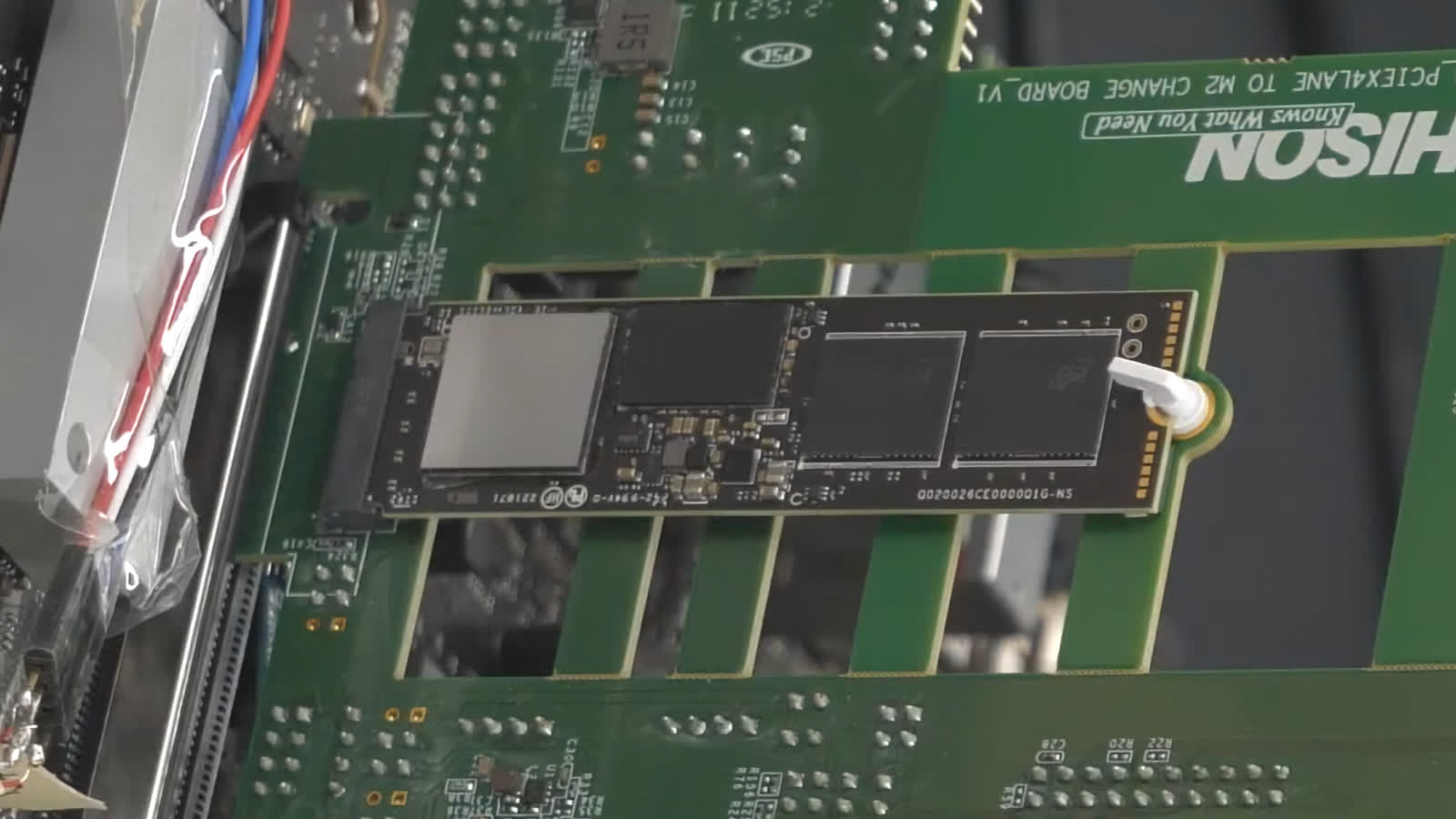Why it matters: These extreme SSD speeds might finally make a difference in loading times when games utilizing the DirectStorage API are out. Until then, the usefulness of high sequential transfer speeds is going to be limited to situations such as large video file transfers.

Phison has just shown off a PCIe 5.0 reference SSD based on its new PS5026-E26 controller and 1TB of Micron's 3D TLC NAND.
In CrystalDiskMark, this SSD reached a sequential read speed of over 12 GB/s and a sequential write speed of about 10 GB/s. Those are extremely impressive numbers, considering flagship PCIe 4.0 drives top out at around 7 GB/s for sequential transfers.
Meanwhile, 4K random reads at QD1, arguably the more important metric for everyday usage, is limited to about 16.000 IOPS, whereas drives like the Samsung 980 Pro can reach up to 22.000 IOPS here. However, these numbers might improve with more mature firmware in shipping products.

Phison's PS5026-E26 is its first PCIe 5.0 controller, and it ships with two ARM Cortex-R5 cores and three proprietary CoXProcessor 2.0 accelerators. It's built on TSMC's 12nm process node, and it supports both TLC and QLC NAND flash memory with data transfer speeds up to 2,400 MT/s.
It's also worth mentioning that Phison's engineering sample seems to be using a slightly wider M.2 2580 form factor, with most M.2 SSDs nowadays using 2280 (the first two digits denote width, while the last two indicate length). This extra width might make these new SSDs incompatible with previous motherboards, though it's doubtful anyone would shell out for a premium PCIe 5 SSD and limit its performance by using it on an older platform.
SSDs based on the E26 are expected to hit the market later this year when AMD's 600-series motherboards also become available.
https://www.techspot.com/news/94751-phison-showcases-pcie-50-ssd-based-new-controller.html